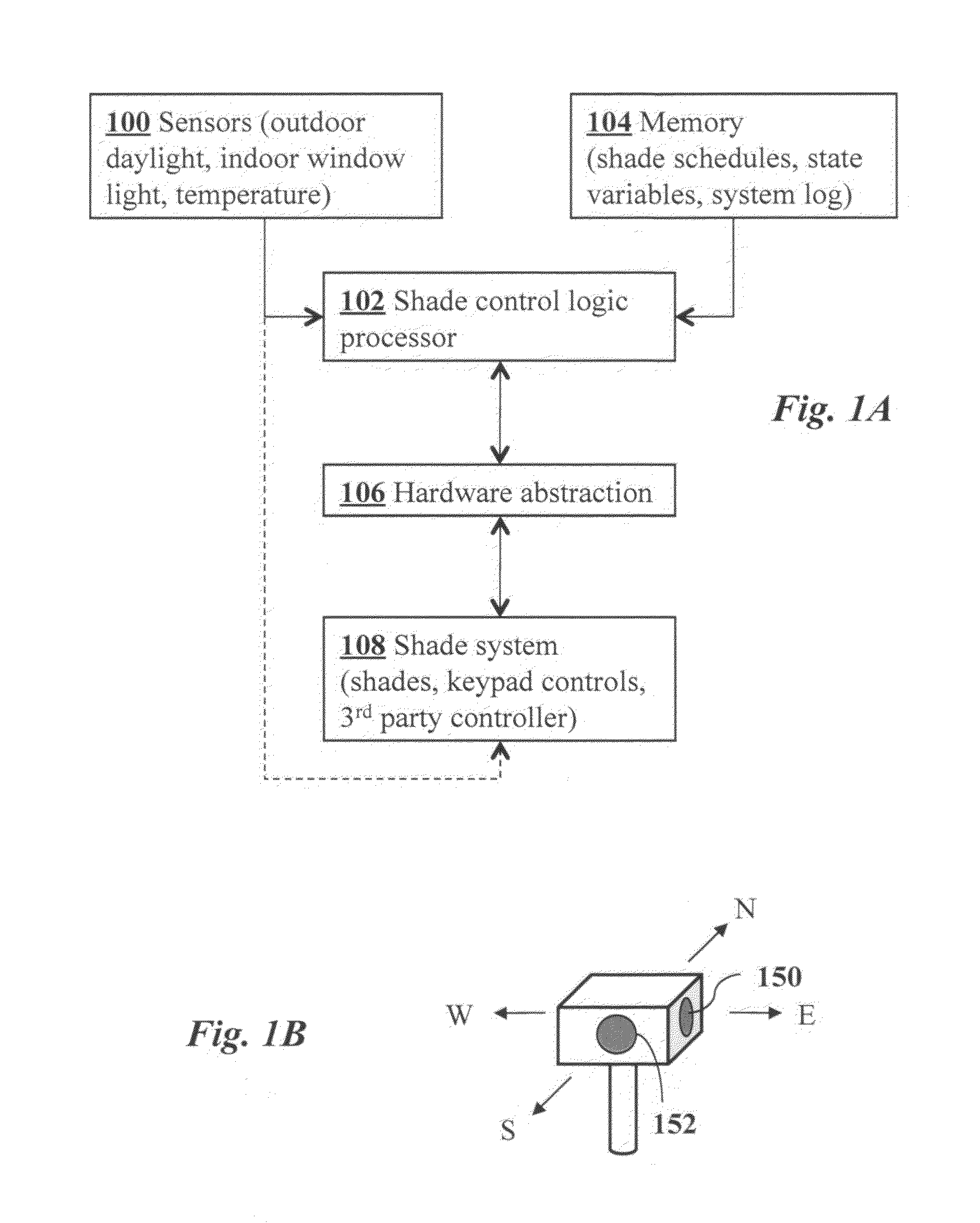Weather-responsive shade control system
- Summary
- Abstract
- Description
- Claims
- Application Information
AI Technical Summary
Benefits of technology
Problems solved by technology
Method used
Image
Examples
Embodiment Construction
[0020]In a preferred embodiment of the present invention, automatic shading adjustment is provided for a shading zone, i.e., a room or portion of a room that has one or more similar windows (similar being similar size, sill height, orientation, glazing type, shade type, exterior obstructions, and whose shades are controlled from the same keypads or other controls) that are associated with a single interior illumination sensor for control purposes. As many zones as needed can be defined. Shade zones may or may not be coincident with electric lighting or daylighting zones. Multiple zones and shades can be handled by cycling through each of the shade zones sequentially. During each cycle, the shades in each shade zone are moved to a calculated shade position that balances a set of criteria. In one alternative these cycles follow immediately one after the other, while in another alternative the cycles happen at regular intervals. These intervals could be fixed or could vary by time of d...
PUM
 Login to View More
Login to View More Abstract
Description
Claims
Application Information
 Login to View More
Login to View More - R&D
- Intellectual Property
- Life Sciences
- Materials
- Tech Scout
- Unparalleled Data Quality
- Higher Quality Content
- 60% Fewer Hallucinations
Browse by: Latest US Patents, China's latest patents, Technical Efficacy Thesaurus, Application Domain, Technology Topic, Popular Technical Reports.
© 2025 PatSnap. All rights reserved.Legal|Privacy policy|Modern Slavery Act Transparency Statement|Sitemap|About US| Contact US: help@patsnap.com



